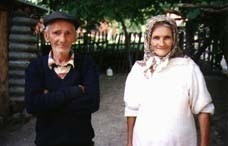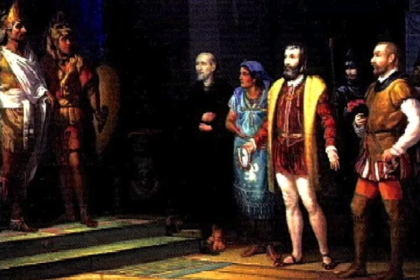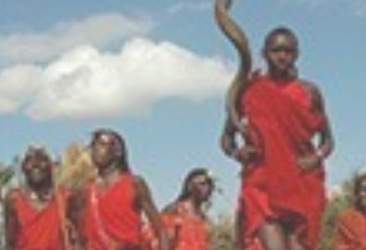The Master Designer – The Song
The Backstory Part I:
Something Old, Something New
I’ve always felt that music in documentaries is absolutely critical. It moves the viewer and conveys emotion, and I’ve gained a bit of a reputation for being very picky about our music choices.
Our new series required a new music theme for the title sequence and I knew I wanted something that reflected the majesty, power and beauty of the creation around us. So I reached out to Emmy award-winning film score composer Charles Denler.
Charles had worked with me previously on our film “The Gentle Bear Man of Emo” and during the process we had become great friends. While most of his work is in Hollywood Charles lives in Denver and is like a brother from another mother, our life journeys have had so many parallels. We had been already meeting for several months as Charles had been commissioned by the Colorado Orchestra to write a modern work called “Portrait of the Rockies” and I had committed to create a documentary on the project. So, Charles, along with respected conductor Scott O’Neil and I had been plotting the project together.
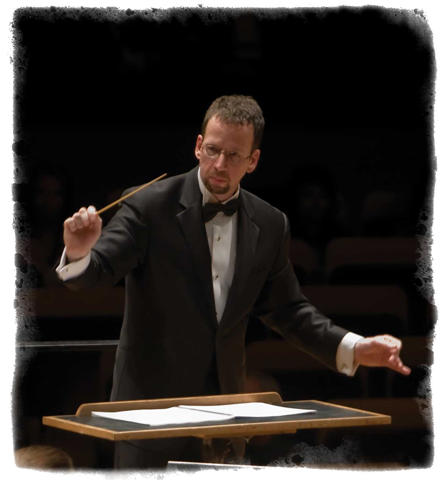
The most difficult part of creating an original theme is the process of adequately conveying what is in my mind for the music, but Charlie seemed to be a mind reader and what he created was spectacular. One day he called me up and said, “I think we need to record this in Prague, I’m doing a another film score there and we can add this session on to it. I’ve asked Scott O’Neil to come along and conduct.”
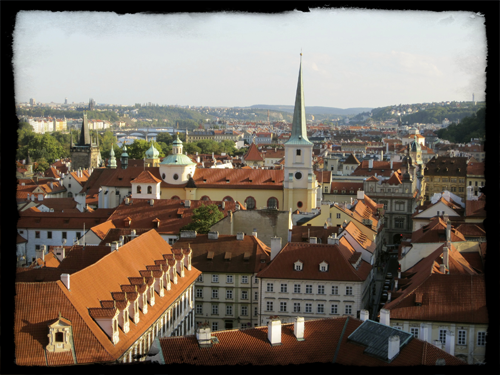
The Prague Philharmonic Orchestra is the most requested orchestra in Europe. They are widely used for film scores. John Williams used them for Star Wars and since dozens of other films have been recorded there like “The Duchess,” “Shogun,” “The Scarlet Pimpernel,” “District 9,” and hundreds more.
So the three of us boarded a plane and headed for Prague.
Prague, or “Praha” as the locals call it, sits right in the middle of The Czech Republic and is the most romantic city in Europe. Rich with old world culture it was sparred many of the horrific carpet bombings that many cites during World War II endured and as a result is houses an astonishing display of historic architecture. As I walked around the city I couldn’t help but think, “What a beautiful place to create beautiful music.”
The recording was upstairs in a building that had no signs and if you didn’t know where you were going you would have missed it completely. The only tell-tale sign that we were at the right building were two muscled ex-military security guys downstairs playing on their computer, apparently there to keep the riff raff out.
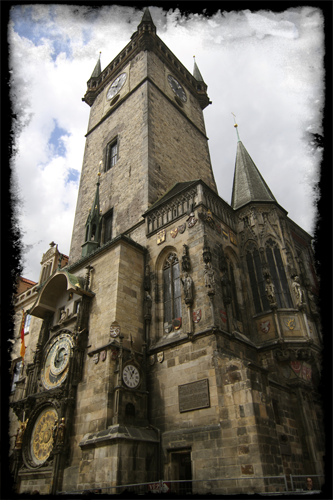
The lobby was covered in posters of movies that had been scored here. Once inside the modest wood floor studio I gazed around me. If only these walls could talk! The podium was the same one used by famed conductor Leonard Bernstein and where Albert Einstein would give his talks, and the lobby was filled with poster of movies that had been scored there. This place reeked of rich history and now we would leave our tiny mark.
When the orchestra arrived Scott and Charlie began to communicate with the musicians through a translator. While they had earned their reputation as one of the worlds great orchestras, they still leaved in a poor post-communist country. Many of them had taken the subway to get there. In fact our harpist showed up 40 minutes late because the subway workers had gone on strike and the subway cars were stopped en route!
But all of that faded when they began to play. The music was beautiful, they played with real emotion. From the first pass, where they had just lay their eyes on the music for the first time… they were almost perfect! True professionals that earn their keep every day.
Of course, because it is Prague, every 30 minutes the musicians would lay their violins or cellos on their chairs or the piano and head off for a coffee break.
“That would never happen in Denver,” Scott O’Neil commented, pointed to a violin that had been plopped down on top of the piano. “Our top players routinely play instruments that are worth over a hundred thousand dollars, so they are always carefully cased when not in use. But they can’t afford instruments like that here.” I realized that while a great instrument is wonderful, a great player is more even more wonderful.
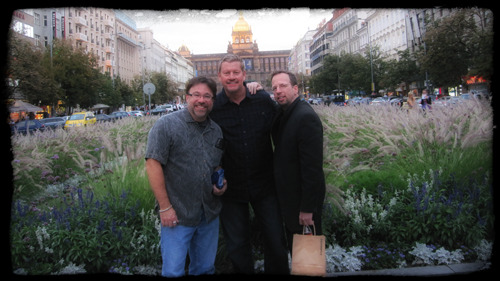
When we finished up the session Charles got up and gave a short word of thanks to the group and in response they began tapping their bows on the top of the music stand – their way of applauding the quality of Charles’ compositions.
“That doesn’t happen very often!” James Fitzpatrick, the orchestra leader, told us later. A real honor indeed.
As we made the long flight back to Colorado I thankfully thought to myself, “I love my job!”
Once back in the States we wanted to add some latin vocals. They were sung by Nelly Greisen (formerly with the legendary 2nd Chapter of Acts) and Canadian singer extraordinaire Connie Scott. Their vocals gave the piece an angelic and human quality, and they came out beautifully.
The latin lines the girls are singing can be translated, “All creatures of our God and King.” Fitting indeed!
Watch the trailer here!
You can purchase and enjoy the beautiful score created by Charles Denler for The Master Designer by visiting our website HERE
The Master Designer – The Song
The Backstory Part II:
The Cricket Chorus
Having grown up in Asia I was aware of the Chinese interest in the cricket’s song dating back before the Tang Dynasty. Before the invention of clocks and calendars the cricket song told them when to plant crops, and later the song would inform then when to weave warm clothes because winter was approaching. But there was more to the cricket song than the Chinese could ever know.
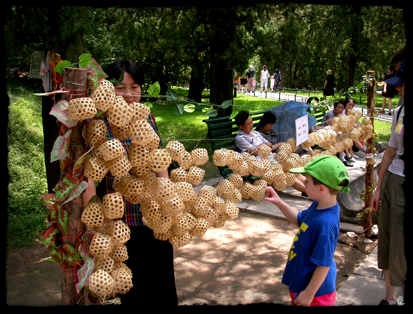
So when I found this unusual and chilling recording of the cricket chorus I approached it with a healthy dose of skepticism. I had to learn more about its origins, so I had our production assistant Amanda track down the engineer who had made the recording. He lived in Santa Fe, New Mexico, and I decided to give him a visit. Jim lived in a typical adobe house surround by cactus a few minutes outside the city. When we rang the doorbell we were greeted with children playing and his wife welcomed us with a charming french accent. During our visit he described the recording process in some detail.
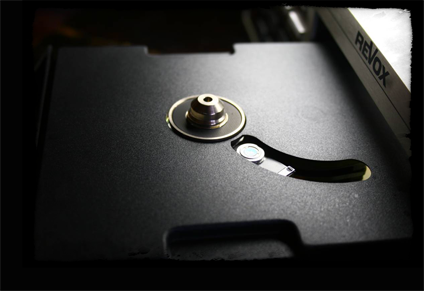
Jim was an audio engineer and had recorded crickets one night in his back yard. He revealed this amazing phenomena by slowing the cricket’s chirp down using an old German Studer reel-to-reel machine. The result was music! It contained incredible four-part harmony and the choral movements were so beautiful they could have been sung by the Vienna Boys Choir!
Cut to an incredible scene in the book of Revelation which so gripped composer Fredrick Handel that it was the inspiration for the ‘Hallelujah Chorus’.
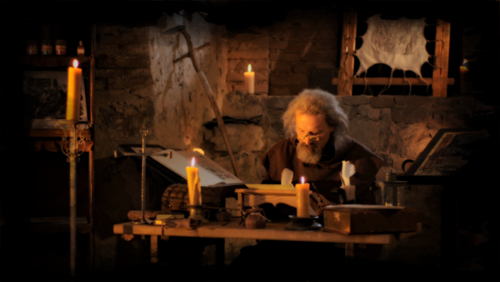
“Then I heard every creature in heaven and on earth and under the earth and on the sea, and all that is in them, saying: To him who sits on the throne and to the Lamb be praise and honor and glory and power, for ever and ever!” – Revelation 5:3
I think the hymn writer Maltbie Davenport Babcock had it right in this 1901 hymn text:
This is my Father’s world, and to my listening ears
all nature sings and round me rings the music of the spheres.
This is my Father’s world: I rest me in the thought
of rocks and trees, of skies and seas; his hand the wonders wrought.
It’s fascinating to realize that the tiny cricket has been singing all along. Only now can we hear the chorus of creation for the first time. Once in a while you stumble across a story that touches and inspires everyone. I think the lowly cricket may do just that.
Listen to “This is My Father’s World” Here
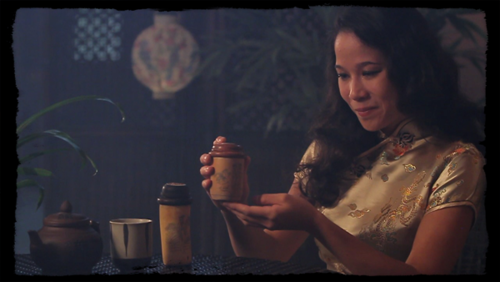
The Master Designer – The Song
The Backstory Part III:
A Grizzly Encounter
It seemed natural that if we were going to tell the bison story we just couldn’t ignore their link to the native peoples of North America. Early American history is marked with these giant beast and as many as 90 million roamed freely in days gone by. But they came to the very brink of extinction with their numbers plummeting to around 500 animals! Many bison were hunted and killed but many more died from brucellosis, an infectious disease that devastated the herd.
Yellowstone seemed to be the best location to film lots of bison. They inhabit this beautiful park by the thousands and in 1902 Yellowstone’s conservation efforts were key is restoring the bison herd to North America – and cruising around Yellowstone National Park was a treat all its own.
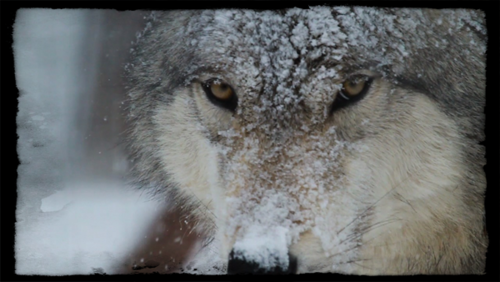
One day while filming we pulled over and notice just about ten feet away was a dark coated wolf looking right at us. He watched us for about ten seconds and then trotted away into a small grove of trees nearby. “Grab the cameras, lets follow him!” I yelled to my crew.
It was late in the afternoon so the light was low. We walked atop this small hill hoping to see the wolf pop out of the other side of the trees that bordered a large meadow and gently sloped upwards 1000 yards directly in front of us.
Suddenly, Kevin our cinematographer shouted, “There he is, at the very top of the meadow!”
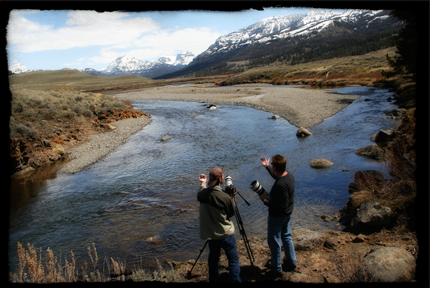
Sure enough something was crossing the field above us. Kevin strapped on our 1200 millimeter lens, a powerful and expensive lens with a price tag of over $25,000. He scanned above us suddenly declaring, “That’s no wolf, that’s a grizzly!”
I realized this was a once in a life opportunity. “Let’s stalk up through the trees along the meadow and get closer to him so we can film,” I said. So quietly and stealthily we moved through the woods until we got close to where we thought the bear was. But now he was no where to be seen. We stepped out in the open and looked around… still no where to be seen!
We began to cross the meadow, an open field with just the occasional scrub oak or shrub in it. Suddenly, our production assistant, Dawn stopped and whispered, “There he is!” He was laying down eating a mere 50 yards in front on us.
“Get down!” I whispered with a sense of urgency! I have had quite a bit of experience around wild animals but with Dawn and Kevin I wasn’t sure what they knew, although they were avid hikers.
“Okay, the first rule is we have to be quite. We don’t want to spook him. The next rule, and you MUST remember this: no matter what happens – nobody runs!” When confronted with a grizzly bear that worst thing you can do is to run. And I was packing a little backup – a .40 caliber handgun, but I had no intention of using it unless it was a last resort to keep my crew safe.
Kevin set up the tripod and began to film. We were all crouched down behind a small little field bush and the bear had not seen us, the wind was also in our favor. Within a few minutes the bear stood up and started to meander slowly across the field. “Amazing! Oh my gosh!” Kevin whispered. The footage he was capturing was spectacular! “Just keep rolling,” I said to Kevin, “We’ve got your back!”
Dawn was by now was getting as low to the ground as possible. She was a tiny 5’ tall girl with blond hair and very little separated us from this 1000 pound grizzly. “Oh no! Oh god!” she breathed.
“Remember, nobody runs!” I reiterated. “Dawn, you’d be just a tiny snack to that massive bear!” I said humorously as the bear moved along the edge of the trees. “This is incredible!” Kevin whispered as he kept rolling. Suddenly the bear stopped. He had caught our scent and was looking right at us. We had been spotted. Curiously, he began to slowly walk in our direction. Straight toward us! “Oh my God!” Dawn whispered. “Keep filming” I urged Kevin, “but at some point, if he gets too close, I’m going to end this.” I was armed as a backup, but my plan was to only scare the bear.
The bear continued walking toward us, finally getting within 60 feet! I reached for my .40 cal automatic and with a firm grip in one hand I stood up with both hands raised and yelled “Hey!” The bear startled, spun around and began to flee back up the meadow and into the trees. Kevin never stopped filming and Dawn held her composure. We got amazing footage that day and I couldn’t have been more proud of my crew.
To find out more about this exciting story, and see the award winning documentary follow this link!
http://www.explorationfilms.com/The_Master_Designer_The_Song.html
The Master Designer – The Song
The Backstory Part IV:
The Rocky Mountain Elk
The elk segment holds a special place in my heart because I live in Colorado and hunt every year with Scott Rennick and other friends. This respect for the animals and the appreciation of their beauty is my story, too.
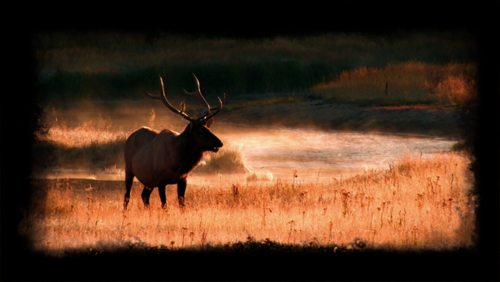
I really wanted to tell this story from the perspective of a hunting camp because all to often hunters are misunderstood or characterized. Scott grew up with John Wayne, and his father Avery Rennick was one of John Wayne’s best friends. John and Avery were camping and hunting friends, and now Scott and I do the same.
The first time at elk camp I’ll never forget Scott pulling out the camping pot and pans that used to belong to his dad. As I looked at them we noticed that John Wayne, Scott’s dad Avery and Curly Howard (The Three Stooges) had all scratched their names in the bottom of one of the pans! “Do you have any idea what this would be worth on eBay?” I exclaimed.
“What’s eBay?” was Scott’s response, in true mountain man style.
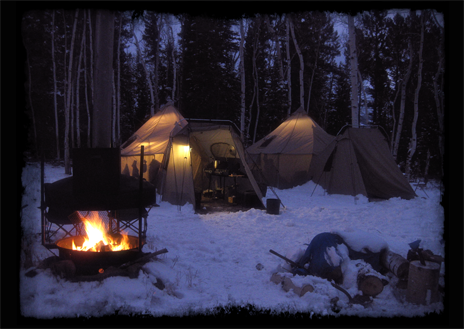
Scott is such a great guy to spend time with in hunting camp because he is so knowledgeable about the animals, has a degree in biology, and has had such a diverse life. The stories shared around the wood stove in the old style canvas hunting tent are priceless and worthy of a documentary someday all their own. Scott was the perfect expert interview for this segment. His beautiful sprawling ranch in Gunnison, Colorado was already very much ‘home’ to me and seemed a fitting place to tell the Rocky Mountain Elk story.
The Master Designer – The Backstory Part V:
The Bees That Saved America
I had found this intriguing story from history on how bees had saved American.
To do a re-creation of this part of history required a grand scale. So, production went to Kentucky and the first day’s location was at the ‘Red River Meeting House’ in Logan County. A special location because it was the site of what was called “The Second Great Awakening” back in 1800. One of the great spiritual movements in the U.S. that lit the fuse that would end slavery. With its beautiful log construction it made a great headquarters for General George Washington; and Rick Revel, our actor, played him perfectly.
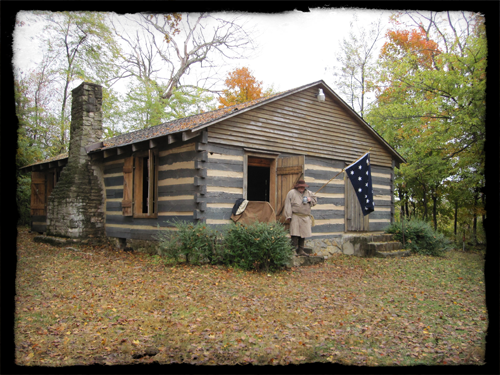
Kentucky had been suggested by a boyhood friend of mine, Harold Maxwell, who lived there. Harold and I both grew up in Hong Kong but had lost touch until the advent of Facebook.
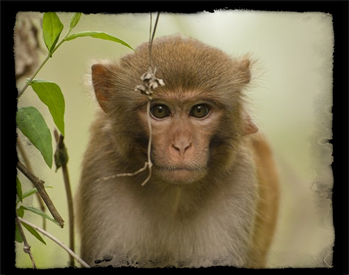
As kids together in Hong Kong, Harold had given me my first pet monkey so it was no surprise to me that he had remained an animal guy. We arrived at this home in Bowling Green only to be greeted by a male lion in his backyard. At one time Max had tigers, puma, and even had a full grown mountain lion roaming his house as a house pet.
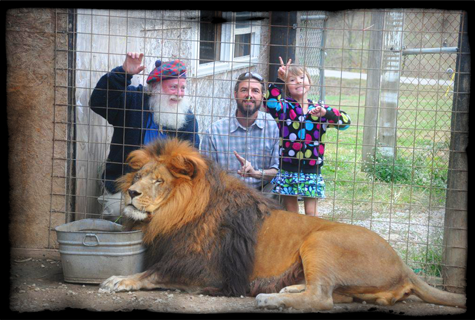
Max is one of a kind. He is the head of a Messianic congregation, an expert fly fisherman, an avid motorcyclist, has learned the ancient ways of making paper and binding books, and with his long white beard every year plays the best Father Christmas you’ll ever see!
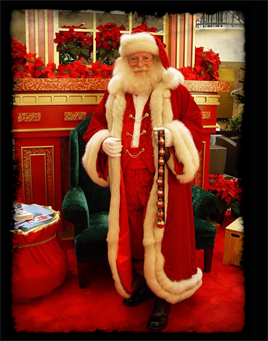
For the large battle scene we went up near Louisville to the historic ranch of Locust Grove and worked with a group of professional re-creators to do the British and American war footage. The costumes were perfect and the cannon’s were loud; all providing a perfect flashback in time. This footage gave us a scene on a grand scale and told the unique piece of history of the bees that saved America.
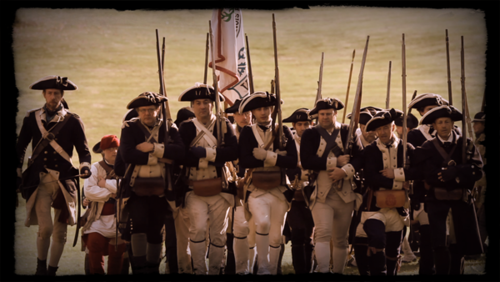
There’s nothing like the beauty of rural Kentucky in the fall, and a chance to visit with my old friend Max was icing on the cake.
To see this amazing battle scene where The Bee’s Save America check out our website: http://www.explorationfilms.com/The_Master_Designer_The_Song.html
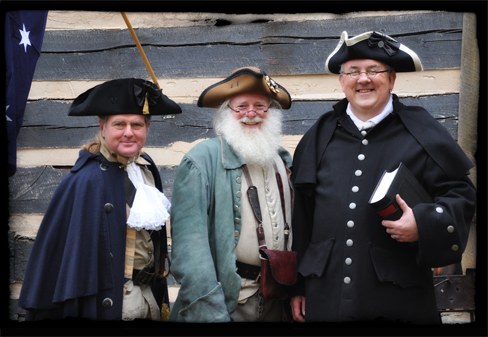
The Master Designer – The Backstory Part VI:
The Madison Buffalo Jump
Creating the Native American scene was particularly challenging. The danger for me was that I needed it to feel authentic and not some cheesy Cowboys and Indians film. I wanted to honor the proud history of the America’s Indians.
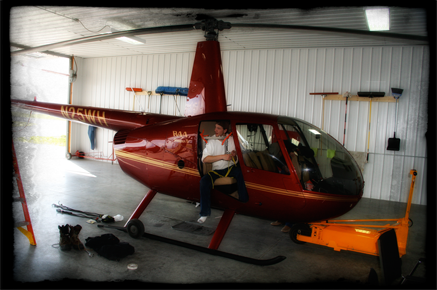
Our scene focused on The Madison Buffalo Jump – a spectacular and dangerous hunting technique used by natives to drive stampeding herds of Bison off a cliff to their deaths thus creating a huge harvest. This period of history takes place before the horse was brought to American by the Spaniards in the 15th century so the hunting was done on foot with warriors disguised in wolf and coyote skins and carrying only a simple bow or spear.
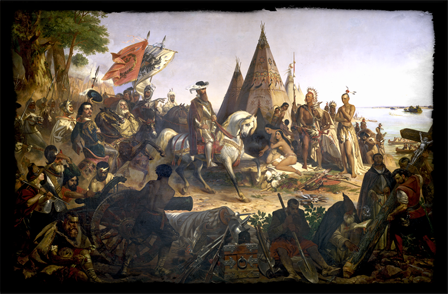
In this era there were no fabrics, to create props and clothing for the scene required everything be made from animal skins. So we purchased raw deer skins and custom sewed and beaded the Squaw dresses, children’s clothes and the men’s loincloths. Care was taken with the little details like the moccasins and the family teepee all had to fit the time period.
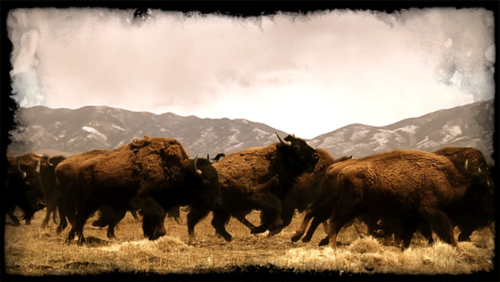
History records a remarkable relationship between Native American and the American Bison. For American natives, the Bison was a gift from heaven, each animal a four-legged treasure trove providing a wealth of raw materials. A typical Bison provided around 800 pounds of meat. But that’s only the beginning.
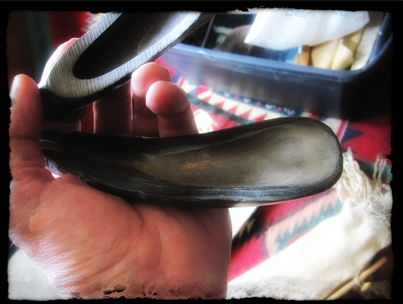
Every part of the animal was used. The horns became spoons or scoops. The bones were used for knives, awls and needles. The sinews were used to make bowstrings and thread. The hide on the top of the head became a bowl. The heart was used as a sack to carry dried meat. The Bison hide was tanned and used for shelter and teepees. Hides were valuable—and helped create a thriving trade. Even the stomach could be used as a cooking vessel.
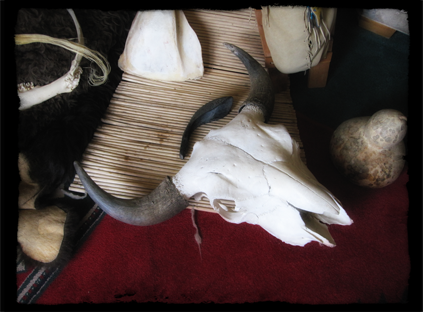
Clint Chartier, one of our warrior actors, had a fantastic collection of ancient Native American artifacts he made available for the scene; and his idyllic ranch in Rye Colorado became the perfect setting to shoot the scene.
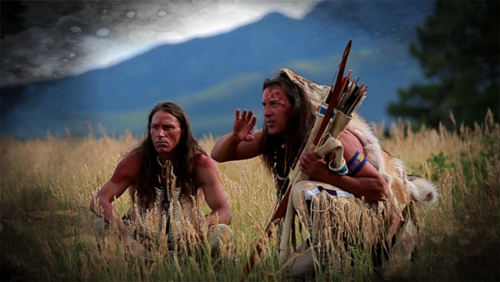
Colorado had been experiencing massive wildfires that were devastating the state and a state wide burning ban made a camp fire out of the question; but Clint and Ron Pearson, our warriors, did a magnificent job creating the hunt. Julie Hill, Raelene Whiteshield, Joslyn, Josieraye and Wades in The Water Runny Wolf rounded out the small camp tribe.
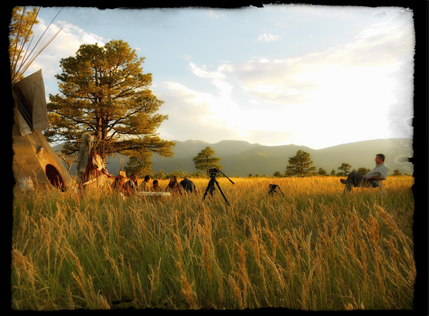
In one scene Clint and Ron rushed the edge of the cliff to look down on their successful hunt when a circling bald eagle directly above us began calling. To Native Americans an Eagle represents honesty, truth, power and freedom. The Creator made all of the birds of the sky when the world was new. Of all the birds, the Creator chose the Eagle to be the leader…the “Master of the skies.”
I looked at my two native American actors and smiled. It was a special moment indeed.
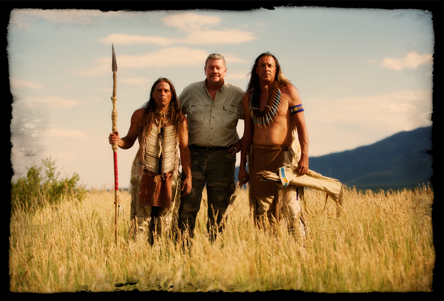
When the film was finally released it warmed my heart to see how proud our Native friends were of the work. They loved the fact that we got it right – and that we honored and respected their rich heritage.
Having traveled the world extensively (over 72 countries) Native Americans hold special interest, maybe more than any other in the world. Their love of the land, rivers, mountains and animals, and the God who provided them is a lesson for us all.
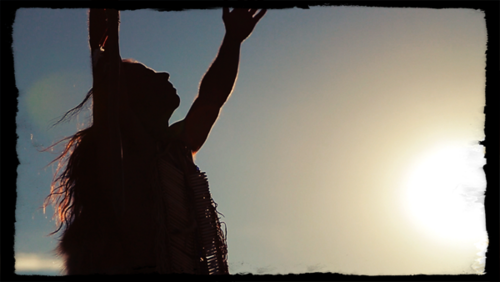
The Master Designer –
The Backstory Part VII:
Finding a Host – Brian Corsetti
Finding the right host is critically important. So the word was put in Los Angeles that Master Designer was looking for an actor for the role. An amazing 1700 actors applied! I was so overwhelmed with this that I hired Jennifer Fredrick to go through the applicants. “Just narrow it down to the top 50 and I will fly to LA to do a casting call,” I said. This was a monumental job and I’ll forever be grateful to Jennifer for the great work she did here.
I arrived in LA and we held the auditions at CAZT Studios in Hollywood. A simple place with a circular lobby filled with nervous actors and small rooms webbing out where directors auditioned them. I felt like Simon Cowell from American Idol seeing 50 actors in two days. I knew that each came hoping to get the part and our short meeting ended with a hand-shake and smile from me saying, “Thanks for coming, we will be in touch!”
When Brian came into the audition room he had a big smile on his face and said, “I know that you guys are Christians, I can tell by the script. I gotta say its refreshing you’re here! Nobody like ‘you guys’ ever come to Hollywood! I’m a Christian too and I’d love to work on a program where I can express my faith.” Telling indeed. Well, we ended up with Brian as our host and loved working with him.
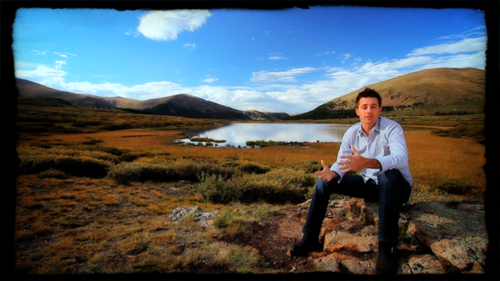
Brian is a really funny guy, has a great work ethic and is a wonderful Christian man. I felt like with Brian I had found a great new friend. We look forward to working on more programs together.
The Master Designer – The Backstory Part VIII:
Science vs God
One of the questions we pose in the program is: is there a conflict between modern science and a belief in a creator God?
Or: has science won the war and buried the idea of God?
This is a new idea. Many of the towering figures of science held a belief in a Creator. Men like Galileo (who is the father of science, physics and observation astronomy), Francis Bacon (who is considered to be the creator of the ‘scientific method’), Johannes Kepler (the German mathematician and astronomer), Sir Isaac Newton (widely considered to be the greatest scientist who ever lived), and the list goes on and on.
As scientists continues to make inroads into areas like DNA, particle theory, string theory and quantum physics; all of it continues to reveal The Master Designer. So getting the facts and science right was really important to me. In order to do this I reached out to several PhD science friends to help us. Each of these have impeccable unassailable scientific credentials.
Edmond W. Holroyd, III, Ph.D.
Edmond holds a B.S. in astrophysics and Ph.D in atmospheric science, specializing in cloud physics and weather modification and is involved in continuing education at Colorado School of The Mines in geology. He has been an atmospheric research scientist for Commonwealth Scientific and Industrial Research Organization, Division of Cloud Physics in Epping NSW, Australia.
Additionally, he was a research scientist and physical scientist for U.S. Bureau of Reclamation. Weather research at Miles City, Montana, weather research at Montrose, Colorado, and remote sensing and weather research at Denver, Colorado. Edmond is an avid bird watcher and has observed over 1117 species in the wild.
Michael G. Windheuser, Ph.D.
Michael holds a Ph.D. in Microbiology and has done post-doctoral work in molecular biology and virology. Dr. Windheuser has taught at both the high school and university level and now works in drug development in private industry. He also writes a regular column in UPLOOK magazine called “Science and You” (www.Uplook.org).
Dr. Vernon L. Grose, BS, MS, DSc
Vernon holds a BS in Physics, MS in Systems Management and an honorary DSc. Described in Business Week as a “founding father” of the application of systems methodology to managing risk, Vernon Grose enjoys worldwide recognition as the creator of a patented methodology that empowers organizations to identify, rank and manage all their risks — systematically.
Dr. Wernher von Braun appointed him to the NASA Safety Advisory Group for Space Flight in 1969. Three appointments by the National Academy of Sciences have involved his systems management background.
President Reagan appointed him to the National Transportation Safety Board in 1983 and the National Highway Safety Advisory Commission in 1986.
